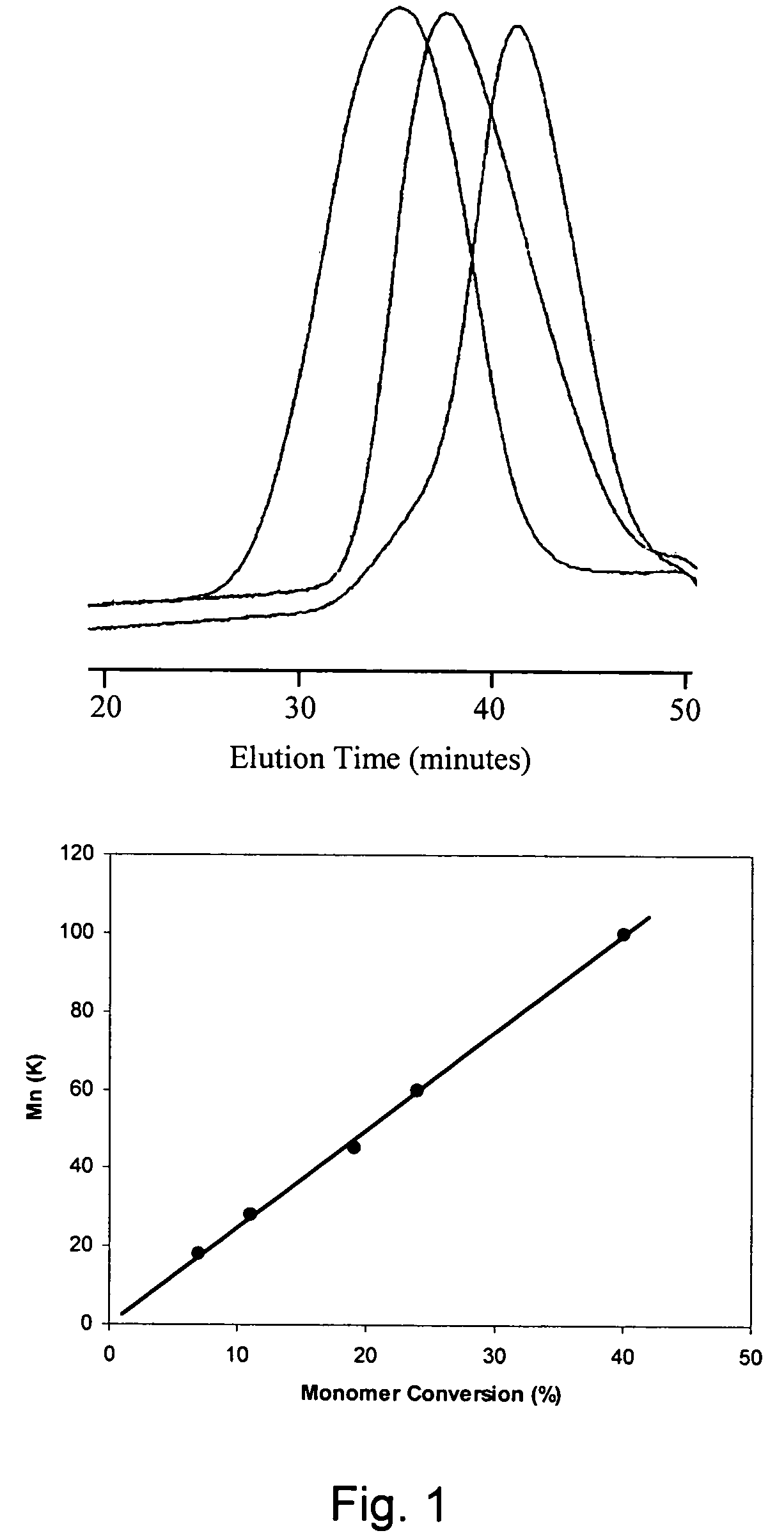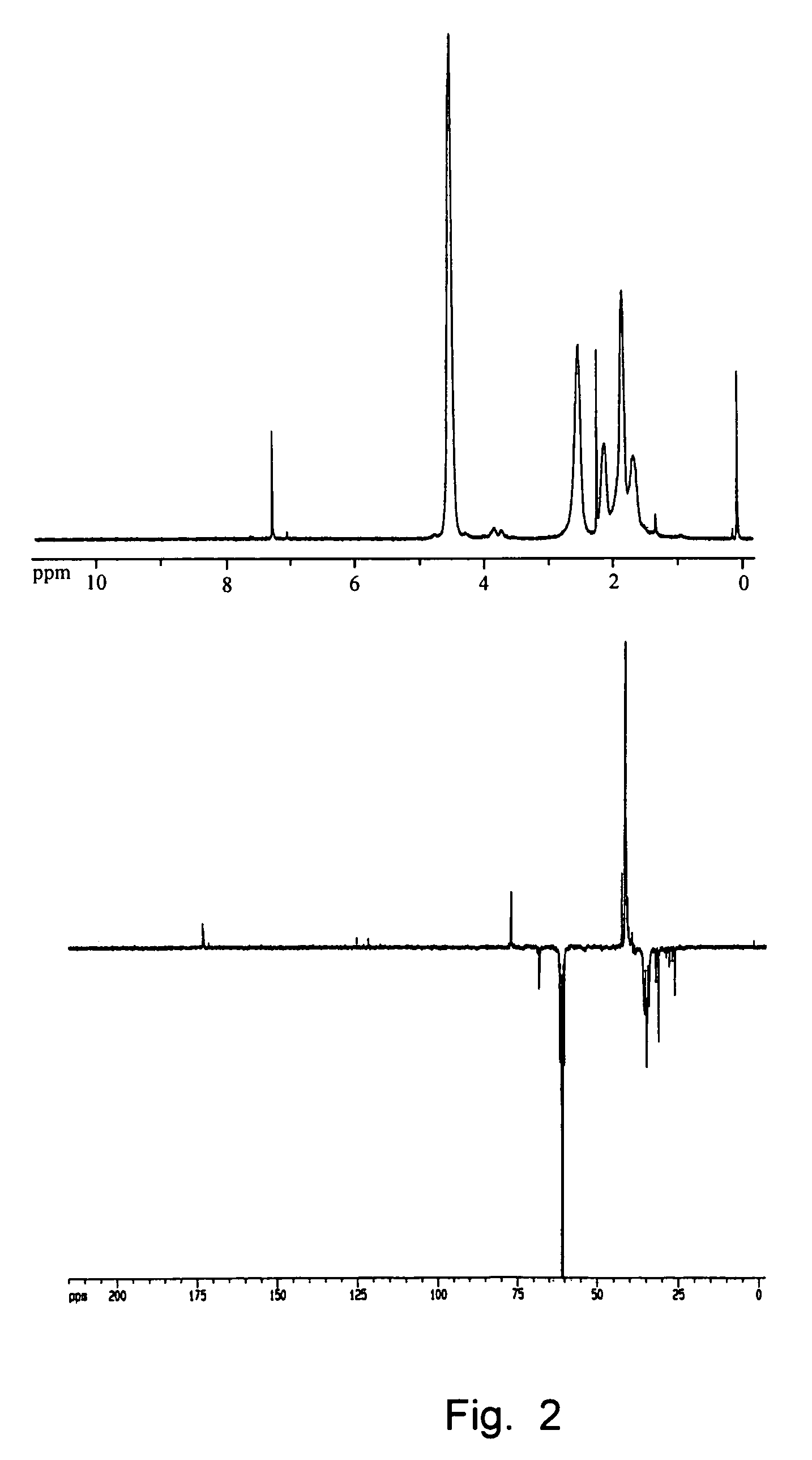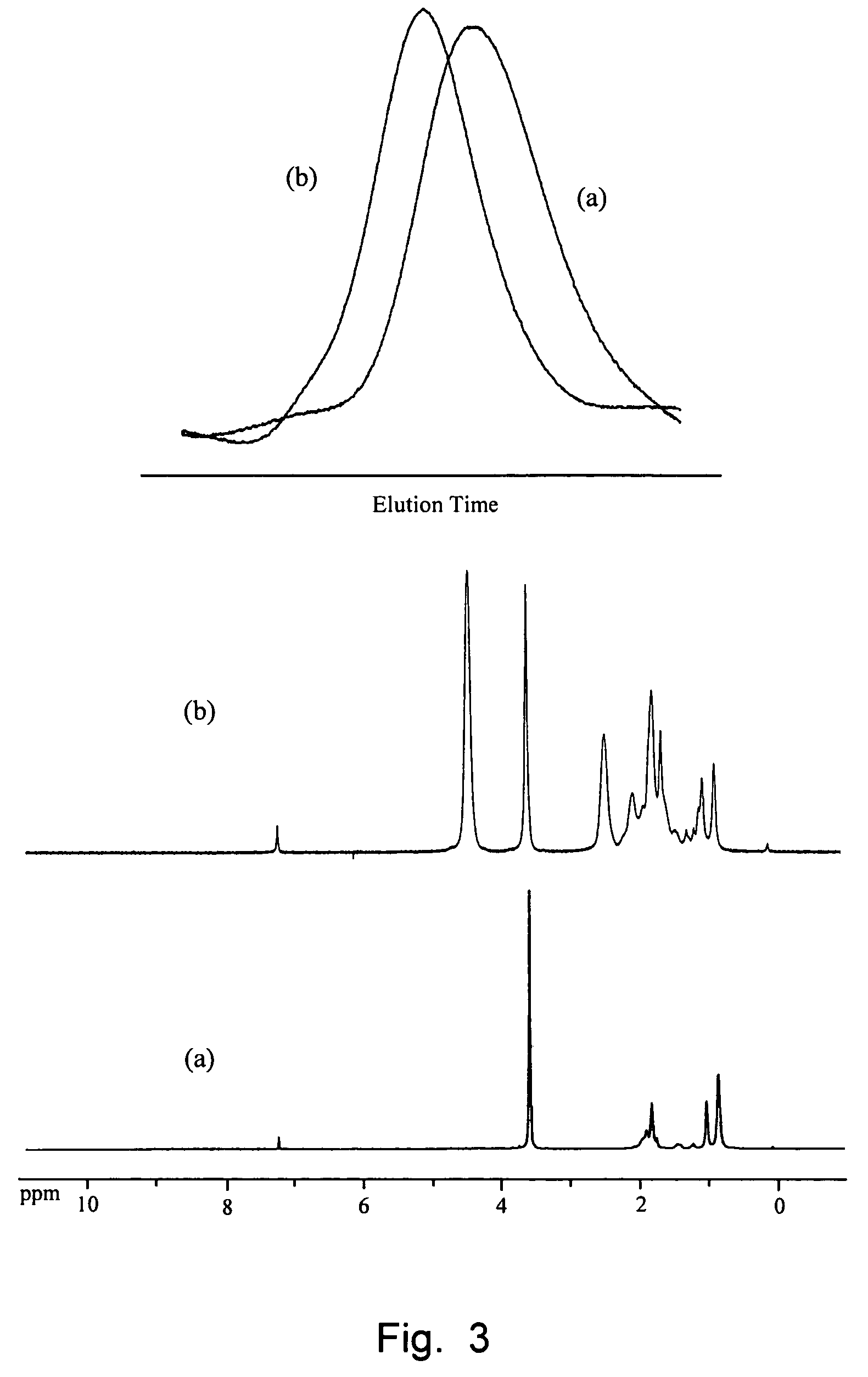Telechelic polymers containing reactive functional groups
a technology of reactive functional groups and polymers, which is applied in the field of telechelic polymers having reactive functional groups, can solve the problems of complex synthesis process, large number of purification procedures, and large number of disproportional reactions, and achieves the effect of reducing the number of reactive functional groups at either chain end, and reducing the number of reactive functional groups
- Summary
- Abstract
- Description
- Claims
- Application Information
AI Technical Summary
Benefits of technology
Problems solved by technology
Method used
Image
Examples
example 1
Synthesis of 1,3,7-Octatriene
[0037]1,3,7-Octatriene was synthesized via dimerization of butadiene aided by phenol in the presence of a Pd catalyst. Under an argon (Ar) atmosphere, to a 1 liter flask equipped with a magnetic stirrer was added 100 g (1.06 mol) of phenol, 4.64 g (0.004 mol) of sodium phenoxide, 0.25 g of π-allylpalladium chloride and 400 ml of chloroform. After the flask was cooled down to −80° C., it was charged with 150 g of butadiene. The solution was gradually warmed up to room temperature within 1 hour. The stirring was continued overnight. Chloroform was then removed completely under vacuum at room temperature resulting in a pale suspension. To this suspension was added 8.0 g (0.03 mol) of triphenylphosphine followed by stirring at 100° C. for 1 hour. About 76 g of 1,3,7-octatriene was then carefully distilled from the mixture by fractional distillation at about 120° C. to 125° C.
example 2
Synthesis of 8-Boraindane
[0038]Under Ar atmosphere at 0° C., 21.6 g (0.2 mol) of 1,3,7-octatriene in 50 ml of THF solution was added dropwise with 200 ml (1.0 M) of borane THF complex in THF solution. After the addition was complete, stirring continued for 1 hour at 0° C. Then the mixture was refluxed for 1 hour before THF was removed completely under vacuum at room temperature. The attained white solid was heated to 210° C. for 3 hours then 9.6 g of 9-boraindane (yield: 41%) was distilled from the mixture at about 50° C. to 60° C. (0.3 mmHg). The spectra data were as follows: 1H-NMR (25° C. in CDCl3) δ 0.08˜1.6 ppm (m); 11B-NMR (25° C. in CDCl3) δ 91.14 ppm (s); 13C-NMR (25° C. in CDCl3) δ 21.9 ppm (b, CH2-B), δ 25.6 ppm (s, CH2), δ 26.3 ppm (s, CH2), δ 27.4 ppm (b, CH2-B), δ 28.4 ppm (s, CH2-B), δ 31.6 ppm (s, CH2), δ 34.4 ppm (s, CH2), δ 42.4 ppm (b, CH—B).
example 3
Synthesis of 1-Boraadamantane THF Complex
[0039]Under Ar atmosphere and vigorous stirring, to 100 ml (1.0M) of allylmagnesium bromide in diethyl ether was added dropwise 4.8 g of borontrifloride diethyl ether. After refluxing for 30 min, the mixture was permitted to stand over night. The solution layer was transferred to another flask under Ar. The diethyl ether was removed by distillation at 60° C. under normal pressure. The triallyl borane was distilled from the mixture under reduced pressure to yield 2.7 g (60%). To a 100 ml flask preheated to 130° C. was added 2.7 g of triallyl borane. After stirring for 5 min was added 1.4 g of methyl propargyl ether. The mixture was stirred for 1 hour then cooled down to room temperature. To the mixture was added 0.7 ml of methanol and stirred for 15 min after the propene gas evacuated completely. To the remaining oil was added 20 ml (1.0 M) of borane THF complex in THF solution. The mixture was refluxed at 80° C. for 2 hours. The THF was then ...
PUM
| Property | Measurement | Unit |
|---|---|---|
| temperature | aaaaa | aaaaa |
| molecular weight distribution | aaaaa | aaaaa |
| molecular weight distribution | aaaaa | aaaaa |
Abstract
Description
Claims
Application Information
 Login to View More
Login to View More - R&D
- Intellectual Property
- Life Sciences
- Materials
- Tech Scout
- Unparalleled Data Quality
- Higher Quality Content
- 60% Fewer Hallucinations
Browse by: Latest US Patents, China's latest patents, Technical Efficacy Thesaurus, Application Domain, Technology Topic, Popular Technical Reports.
© 2025 PatSnap. All rights reserved.Legal|Privacy policy|Modern Slavery Act Transparency Statement|Sitemap|About US| Contact US: help@patsnap.com



